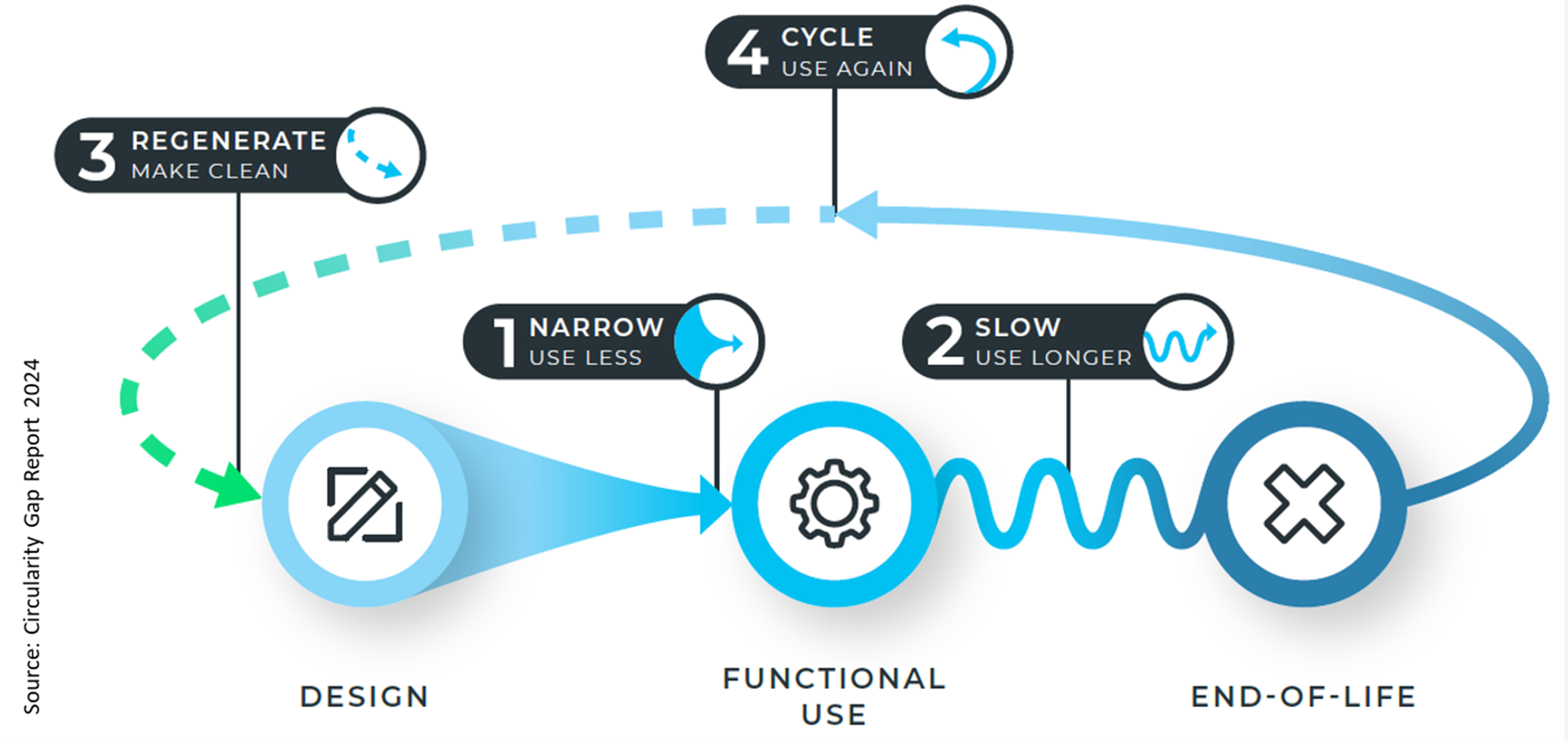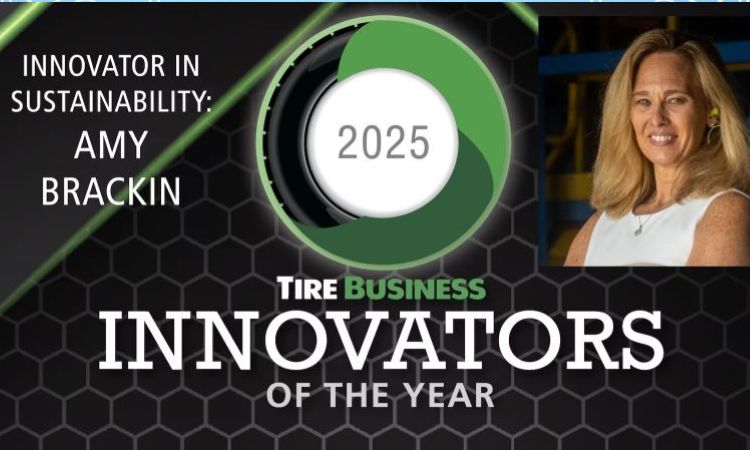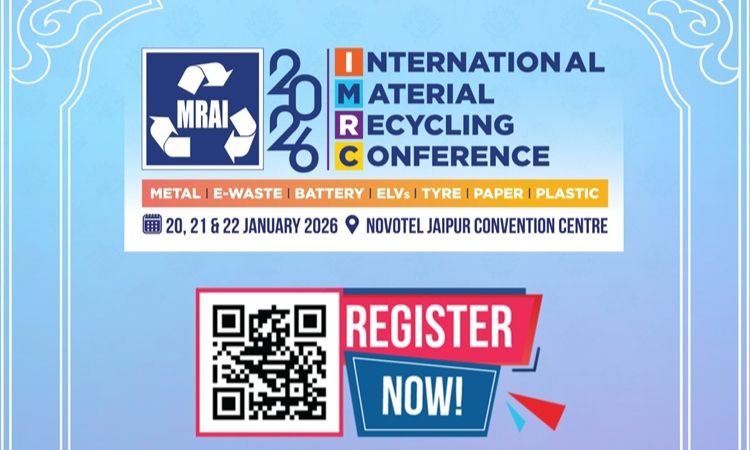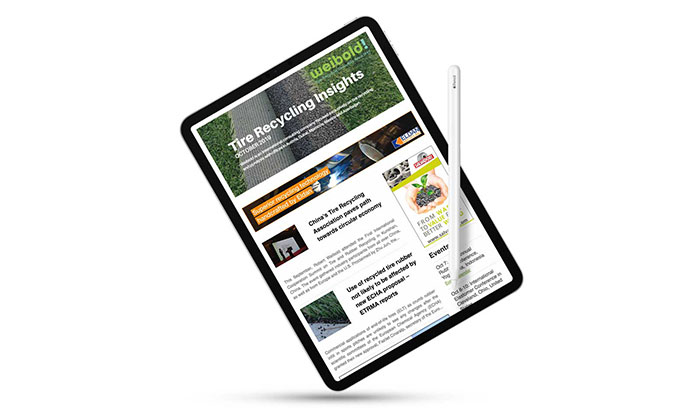Weibold Academy: Global circularity must be doubled by 2032
Weibold Academy article series discusses periodically the practical developments and scientific research findings in the end-of-life tire (ELT) recycling and pyrolysis industry.
These articles are reviews by Claus Lamer – the senior pyrolysis consultant at Weibold. One of the goals of the review is to give entrepreneurs in this industry, project initiators, investors and the public, a better insight into a rapidly growing circular economy. At the same time, this article series should also be a stimulus for discussion.
For the sake of completeness, we would like to emphasize that these articles are no legal advice from Weibold or the author. For legally binding statements, please refer to the responsible authorities and specialist lawyers.
Introduction
The Circularity Gap Report 2024, released by the Circle Economy Foundation on January 24, 2024, underscores the pressing need for improved political, financial, and labor conditions to foster a worldwide circular economy. It not only identifies critical drivers but also offers concrete recommendations for policy, finance, and labor to expedite the transition toward a circular economy.
The report unveils a concerning trend, revealing that the global economy's circularity stands at a mere 7.2%, marking a decline from 8.6% in 2020 and 9.1% in 2018. It points to the deficiency in political and legal frameworks that incentivize circular practices and products as a significant hurdle in achieving a circular economy.
The ultimate challenge of the 21st century
The central question of our time revolves around how to ensure the well-being of people while staying within the essential boundaries of our planet, encompassing air, land, and water. Currently, our global economy falls short on various fronts, as we grapple with what some term a 'polycrisis' - a complex interplay of global challenges spanning geopolitics, economics, the environment, and social issues. Despite these multifaceted crises, we are struggling to reverse their impacts and establish a stable societal foundation for a substantial portion of the world's population.
One of the primary culprits contributing to these challenges is the relentless increase in material consumption and the resulting waste generation. This trend exacerbates disparities in the distribution of wealth, resources, and opportunities across the globe. However, there exists an alternative path. The Circularity Gap Report in 2023 revealed that by embracing circular economy solutions, how people's needs can be met while utilizing one-third fewer materials than we currently do, effectively reversing the overshoot of five critical planetary boundaries.
This report goes beyond theory and delves into the practical "how" of implementing these circular solutions. It builds upon the previous year's identification of 16 solutions spanning four key systems: food, the built environment, manufactured goods, and mobility. The aim is to guide governments and industry leaders in turning these concepts into actionable initiatives. It examines the role of enabling elements such as policy, financial shifts, and workforce engagement, illustrating how they can facilitate the transition to a circular economy on a global scale.
At the heart of this endeavor are people, and the vision is one where no one is left behind. It envisions a just and secure transition that benefits workers, citizens, and consumers alike.
The challenge at hand is monumental. While material consumption has historically played a pivotal role in elevating living standards worldwide, it has also triggered a correlated increase in ecological impact. Material consumption is now recognized as a reliable indicator of environmental harm, with material handling and usage contributing significantly to greenhouse gas emissions, biodiversity loss, water stress, and other environmental challenges. Balancing the aspiration for improved living standards with the need for ecological sustainability is the ultimate challenge of the 21st century.
The inherent drawbacks of excessive material consumption
The current model of material consumption, while essential for human development and fulfilling basic needs like infrastructure, nutrition, shelter, and mobility, is inherently flawed for several critical reasons:
- Unsustainable Growth: The modern economy (still) relies on linear practices that have led to exponential growth in material consumption, pollution, and waste generation. In the past six years alone, the global economy has consumed an astonishing 582 billion tonnes of materials, nearly as much as was consumed throughout the entire 20th century. This unsustainable trajectory places immense pressure on Earth's ecosystems and biocapacity, far exceeding what is necessary to meet essential societal needs.
Inequality and Societal Strain: The unequal distribution of wealth and resources resulting from global production and consumption patterns is leading to social unrest, political instability, and mass migration. Climate change exacerbates these issues by further limiting resource access and habitable land, heightening societal tension and conflict.
Disproportionate Environmental Impact: A minority of individuals, both within and between nations, disproportionately contribute to environmental degradation. High-income nations, particularly the European Union and the United States, significantly drive ecological breakdown, despite representing a small fraction of the world's population. The world's wealthiest 1% are responsible for a disproportionate share of carbon emissions and possess a vastly disproportionate amount of wealth compared to the bottom 99%.
Diminishing Returns on Material Consumption: In many high-income nations, there is a saturation point in history where increasing material consumption no longer guarantees improvements in human well-being. More unequal societies tend to be less content. Wealthier nations can no longer justify unrestricted material consumption as a measure of progress.
In essence, the prevailing model of material consumption is unsustainable, exacerbates inequality, and no longer serves as an indicator of enhanced human well-being. A paradigm shift is imperative to address these issues, strike a balance between development and ecological sustainability, and promote equitable and sustainable societal progress.
A more environmentally sustainable and socially equitable future
Rethinking our approach to material consumption is essential to redirect our development path toward a more environmentally sustainable and socially equitable future. Many countries seek to expand their economies to build stronger social foundations, often requiring increased or stabilized material consumption. To create ecological space for these nations, those with already robust economies and social infrastructure must reduce their material footprints. Redistributing material resources is a critical step to ensure universal access to basic needs while staying within the planet's safe boundaries.

Source: Circularity Gap Report 2024
The Circularity Gap Report examined data from 148 countries between 2005 and 2015, revealing distinctive development pathways. Some countries managed to enhance well-being indicators such as life expectancy, nutrition, and access to energy without a substantial increase in material demand. Others, however, injected substantial materials into their economies without noticeable improvements in quality of life. This demonstrates that material consumption and environmental pressures can be decoupled from a high quality of life and well-being.
The circular economy, characterized by principles like using less, using items for longer, making products cleaner, and reusing materials, offers a pathway to maintain a high quality of life for an expanding and urbanizing global population while remaining within planetary boundaries. The findings indicate that we can fulfill societal needs such as housing, nutrition, mobility, and manufactured goods with 30% fewer materials, effectively reversing the overshoot of five planetary boundaries.
The transition to a circular economy must prioritize social justice and place people's well-being at its core. Citizens, workers, and consumers must be central in designing circular solutions to ensure that no individual, community, or nation is left behind. It is crucial to consider the social, emotional, and physical aspects of human well-being when implementing circular solutions, with a particular focus on providing decent work. Jobs represent a critical aspect of well-being, as they provide financial security, meaning, community, and social mobility. Circular solutions can not only create jobs but also enhance job quality, and safety, and reduce inequalities.
Consumers play a significant role in the circular economy, and this report explores consumer-centric solutions that empower citizens to make sustainable choices, hold policymakers accountable, and support grassroots initiatives. This approach aligns incentives with people's needs, fostering a circular economy designed with and for people.
Drawing from the Circularity Gap Report, this report identifies impactful circular solutions tailored to different country profiles based on their environmental impact, potential socio-ecological benefits, and the unique characteristics of their economies, ultimately addressing the needs and desires of their populations.
Conclusion
The imperative for a global transition to a circular economy has never been more pressing. While the concept has gained traction and generated significant discourse, the reality remains that the world is witnessing a continuous decline in global circularity. Despite the rhetoric surrounding this 'megatrend,' we are confronted with a sobering truth: we have yet to manifest concrete actions and measurable impacts at the scale required to address our pressing social and environmental challenges.
The Circularity Gap Reports have consistently shed light on the alarming trends of our linear 'take-make-waste' economy, illustrating the critical need for transformative change. The crossing of six out of nine planetary boundaries is indicative of the urgency at hand, and it is within our power to reverse this trajectory. By adopting a suite of 16 circular economy solutions, we have the potential not only to recalibrate the delicate balance of planetary boundaries but also to curtail material extraction significantly.
Weibold is an international consulting company specializing exclusively in end-of-life tire recycling and pyrolysis. Since 1999, we have helped companies grow and build profitable businesses.









